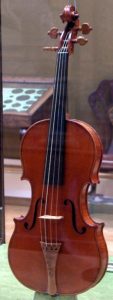 Nobody seems able to make a Stradivarius today. They’re non-replicable.
Nobody seems able to make a Stradivarius today. They’re non-replicable.
Do they make a different sound? Blind studies have suggested expert musicians can’t tell Strads from other well-made violins. But they are well-preserved.
All sorts of people have tried to figure out what makes Strads unique. After all, the craftsmanship can be equaled, even if not excelled, if you try hard enough; and the Norway spruce trees they came from still grow. You can even find 17th century wood; all you need is 17th century buildings. They exist.
The answer seems to be wood preservative. As a Popular Science article (here) notes, “worms hate them.”
The article says, “According to new research …, violins made by Antonio Stradivari (often known as Stradivarius) and his contemporary, Guiseppe Guarneri, were treated with proprietary blends of mineral salts.”
What chemists found in “unexceptional” violins of the same vintage was human sweat; in Strads, aluminum and table salt. The latter keeps wood from cracking; aluminum has been used for centuries as a fungicide and pesticide. A chemist who studies old violins says “the treatments may have been as much for preservation against worms and wood rots as for sound.”
Photo: The Messiah Stradivarius, the only “like new” Strad in the world, because its maker never sold it, is in a London museum